Landforms, Rocks, and Soil
Landforms
Landforms are natural physical features of the Earth's surface. They are created by the forces of nature such as wind, water, ice, and volcanic activity. Some common landforms include mountains, valleys, plateaus, and plains.
Mountains
Mountains are large landforms that rise prominently above their surroundings. They are usually formed through tectonic plate movements and volcanic activity.
Valleys
Valleys are low areas of land between hills or mountains, often with a river or stream flowing through them. They are formed through erosion by water and ice.
Plateaus
Plateaus are flat, elevated landforms that are higher than the surrounding areas. They are often formed by the uplift of the Earth's crust.
Plains
Plains are large, flat areas of land that are generally lower in elevation. They can be formed by the deposition of sediment or as a result of the erosion and weathering of existing landforms.
Rocks
Rocks are solid material made up of one or more minerals. There are three main types of rocks: igneous, sedimentary, and metamorphic.
Igneous Rocks
Igneous rocks are formed from the cooling and solidification of molten rock material. They can be either intrusive (formed below the Earth's surface) or extrusive (formed on the Earth's surface).
Sedimentary Rocks
Sedimentary rocks are formed from the accumulation and compression of sediments. They often contain fossils and are commonly found in layers or strata.
Metamorphic Rocks
Metamorphic rocks are formed from the alteration of existing rock through heat, pressure, or chemical processes. They often have a banded or layered appearance.
Soil
Soil is a mixture of organic matter, minerals, gases, liquids, and organisms that together support life. It is formed through the weathering and erosion of rocks and the decay of organic materials.
Soil Layers
Soil is typically composed of several layers, including the topsoil, subsoil, and bedrock. Each layer has different characteristics and functions in supporting plant growth and other biological processes.
Soil Composition
Soil is composed of mineral particles, organic matter, water, and air. The proportions of these components determine the soil's texture, fertility, and ability to support plant life.
Understanding landforms, rocks, and soil is essential for understanding the Earth's surface and the processes that shape it. This study guide will help you grasp the key concepts and connections between these important aspects of the Earth's geology.
.◂Science Worksheets and Study Guides Fifth Grade. Landforms, Rocks and soil

 Activity Lesson
Activity Lesson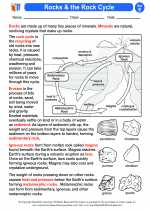
 Worksheet/Answer key
Worksheet/Answer key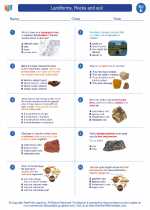
 Worksheet/Answer key
Worksheet/Answer key
 Worksheet/Answer key
Worksheet/Answer key
 Worksheet/Answer key
Worksheet/Answer key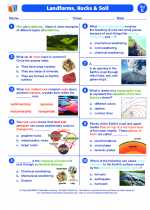
 Vocabulary/Answer key
Vocabulary/Answer key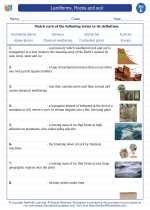
 Vocabulary/Answer key
Vocabulary/Answer key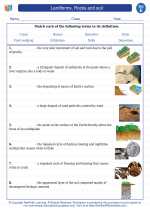
 Vocabulary/Answer key
Vocabulary/Answer key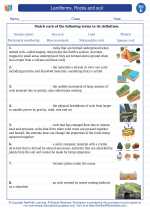
 Vocabulary/Answer key
Vocabulary/Answer key
